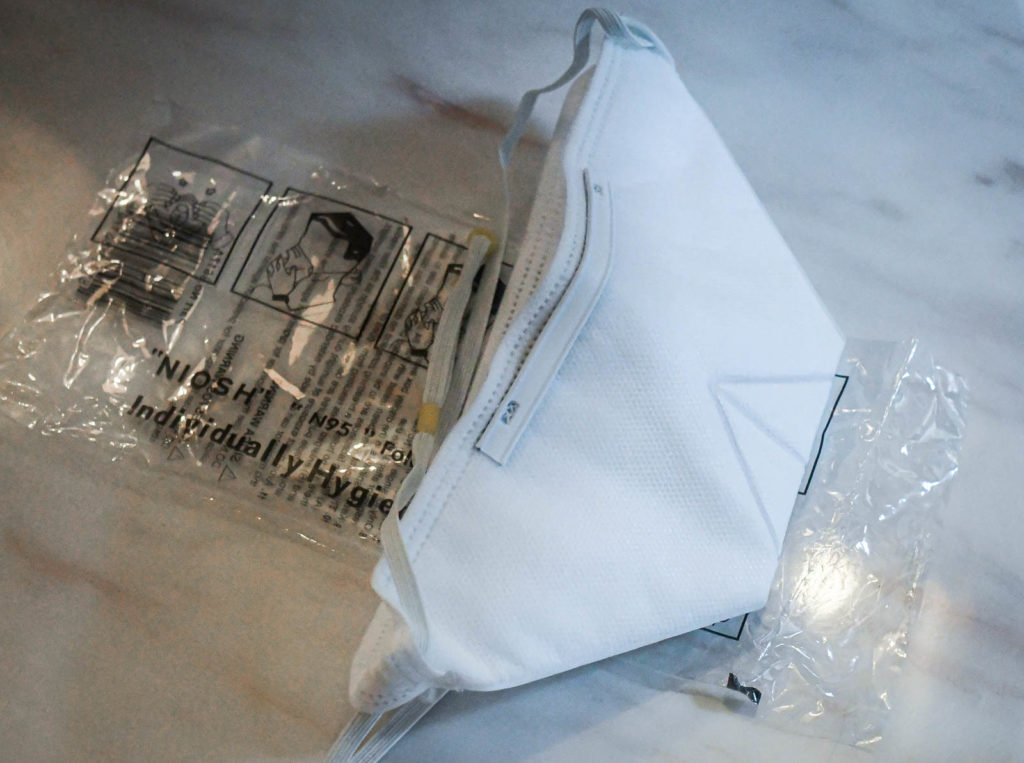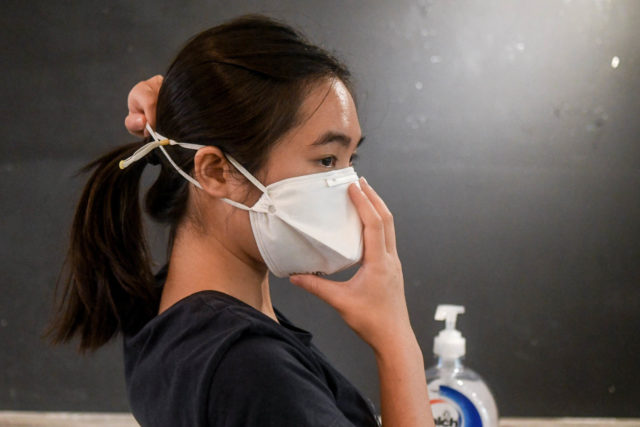Some respirators can be effectively decontaminated of the coronavirus and reused, which could help doctors when protective equipment supplies run low, UCLA researchers found.
When using vaporized hydrogen peroxide for 10 minutes, the researchers found no traces of SARS-CoV-2 on N95 respirators, said Amandine Gamble, a postdoctoral researcher at UCLA and a co-author of a study published in September in the Emerging Infectious Diseases Journal.
N95 respirators are a type of personal protection equipment that filters out at least 95% of airborne particles, according to the Center for Disease Control. These respirators have been essential for protecting frontline health workers from SARS-CoV-2, the virus responsible for COVID-19 infections, according to the study.
Rocky Mountain Laboratories, a lab under the National Institute of Allergy and Infectious Diseases, collaborated with UCLA researchers on the study.
To sterilize the N95 respirators, researchers placed the respirators in a sealed container with hydrogen peroxide, then warmed up the box, Gamble said. This allowed the hydrogen peroxide to vaporize and penetrate into the respirator, she said.
Other methods, such as dry heat at 158 degrees Fahrenheit or ultraviolet light, also decontaminated the respirators, but took more than an hour to do so, Gamble said. When the researchers tried ethanol spray, the respirator seals corroded, she added.
Vaporized hydrogen peroxide sterilization is currently used in certain hospitals to decontaminate instruments or to clean whole rooms, said Vincent Munster, a co-author of the study and the chief of the virus ecology unit at National Institutes of Health.
However, some doctors recommend against reusing N95 respirators, said Nathan Weber, an anesthesiologist at Ventura County Medical Center. FDA guidance also recommends against reusing N95 respirators.
“The reuse of masks should only take place if a severe shortage is anticipated,” Weber said. “The ideal use of an N95 is to be thrown away after eight hours of use, or five total uses, whichever comes first.”
Gamble said the respirators should not be decontaminated and reused more than three times because it would damage the seal of the respirator and would not be able to filter out at least 95% of small particles, including SARS-CoV-2.
Gamble said she and her colleagues were worried about a potential shortage of PPE when the pandemic began. This led the researchers to start looking into whether doctors could disinfect SARS-CoV-2 from N95 respirators, she added.
“We got a lot of direct questions from the public health community worried about PPE shortages,” Munster said. “That’s when we decided that we could do some relatively easy experiments to assess the possibility for decontamination.”
Weber said when respirator supplies were low, his hospital collected and cleaned old respirators.
N95 respirators are different from surgical masks, which do not have tight seals around them and cannot filter out airborne particles as effectively as N95 masks, according to 3M, one of the largest manufacturers of PPE in the United States.

The COVID-19 pandemic has led to a dramatic increase in demand for the N95 respirators, said Tim Post, a spokesperson for 3M. “Since January, 3M has doubled its N95 respirator production globally and we’re on track to produce 2 billion respirators by the end of 2020,” Post said. The increase in demand, Post said, was around 20 to 40 times more than pre-pandemic levels.
While N95 respirators typically cost around $0.50 each before the pandemic began, the average price has since shot up to over four dollars, according to a JAMA article. And beyond the cost, it has been difficult for many hospitals and healthcare facilities to find N95s in stock, according to the article.
“We are working with governments and others to prioritize, triage and redirect supplies to serve the most critical needs and areas,” Post said. “The reality is that even with 3M’s accelerated production combined with capacity from other manufacturers, the demand for N95 and other respirators continues to exceed supply for the entire industry and will for the foreseeable future.”
Due to the shortage of respirators during the pandemic, some used home remedies to disinfect their respirators.
Weber said heating a respirator at 70 degrees celsius for 60 minutes is an effective way to decontaminate an N95 respirator while still maintaining its filtering abilities.
Soap and water can damage a respirator and make it less effective, according to an April article published in the Journal of Emergency Medicine.
“In terms of cleaning the masks, again, not ideal but if it is all you have, it can work,” Weber said. “Using soap and water is probably the least effective.”
Still, health care providers should not reuse N95 respirator whenever possible, Weber said.
“But the future is uncertain,” Weber said, “and there should be hospital protocols in place to educate healthcare providers on how to recycle their masks.”

